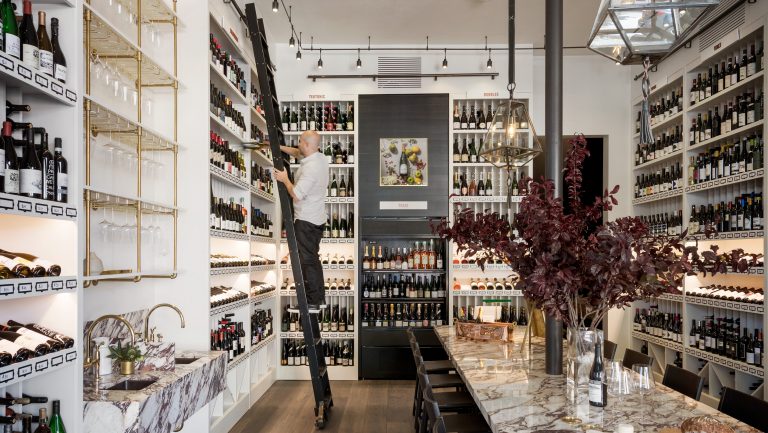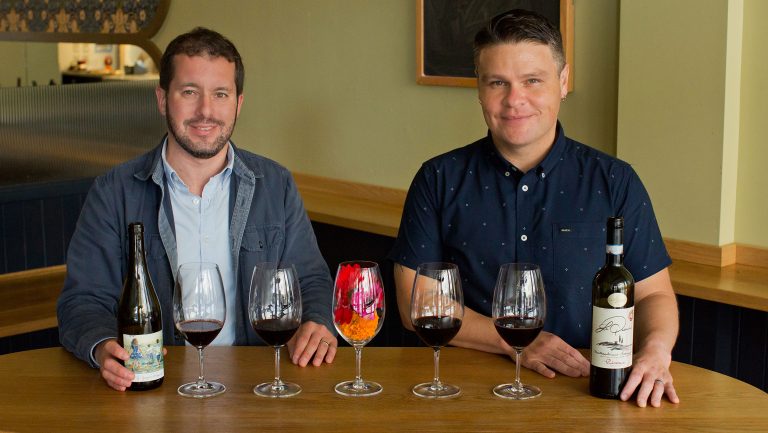When I first started working with Verve Wine, a bicoastal retail business with locations in New York City and San Francisco, in October 2017, it was clear that the company maintained an “all hands on deck” mentality. Although my official role was as the company’s content and social media manager, with a focus on writing in-house copy, I was going to be part of the larger marketing team. Never having held a marketing position, I had a lot to learn.
One of the first things I learned in my new position was that most successful wine shops actually sell more than just wine. Sure, wine keys, books, and other alcoholic beverages help fill the gaps, but finding additional ways to maximize our use of the physical space we have allows us to grow our revenue beyond just wine. I started thinking, How are other stores doing this? I spoke with eight prominent wine purveyors across the country to get their tips. Here’s what they do to make the most of their retail spaces.
1. Host Educational Classes and Seminars
“More and more consumers are seeking out experiences,” says Lenny Redé, the wine and spirits buyer at New Seasons Market on Mercer Island in Washington State, who notes that offering classes and events has been a great way to increase revenue. Redé hosts tastings, which are normally free of charge, as well as blending seminars and food-pairing classes—besides wine, these have included Scotch and oysters, and chocolate and whiskey—which typically cost around $10 per person. Redé always invites wine writers and bloggers to these events gratis, and they often end up sharing their experiences on social media. “Even if people can’t make it to the event,” he says, “they see your [store] as a place where stuff is happening.”

Don’t miss the latest drinks industry news and insights. Sign up for our award-winning newsletters and get insider intel, resources, and trends delivered to your inbox every week.
At Verve Wine, cofounder Dustin Wilson, MS, holds an array of sit-down seminars, ranging from $10 to $35; they’re taught by him, by visiting winemakers, or by staff members. Verve also hosts more casual events that feature industry guests and colleagues. “It’s important for me to get more people in front of good wine,” Wilson says, “to give them a place to connect with and learn about it, so these events tie in perfectly with what our business is about.”
2. Adapt Your Business Model
When Tim Moore, the owner of Mac Wine Cellars in Portland, Oregon, first opened his 535-square-foot retail shop, he focused primarily on bottle sales; however, he quickly realized that his clients wanted more. “My neighborhood wanted more than just a place to buy wine to take away,” he says. “I soon added food items, a glass pour list, and beer taps, et cetera. I reconfigured the space to allow for more seating, going from 10 seats to 20.” Moore also adjusted the shop’s hours to be open later in the evenings, effectively changing his business model from just a wine shop to a tasting room, wine bar, and retail shop—an on-premise/off-premise hybrid that is allowed by Oregon State beverage law.
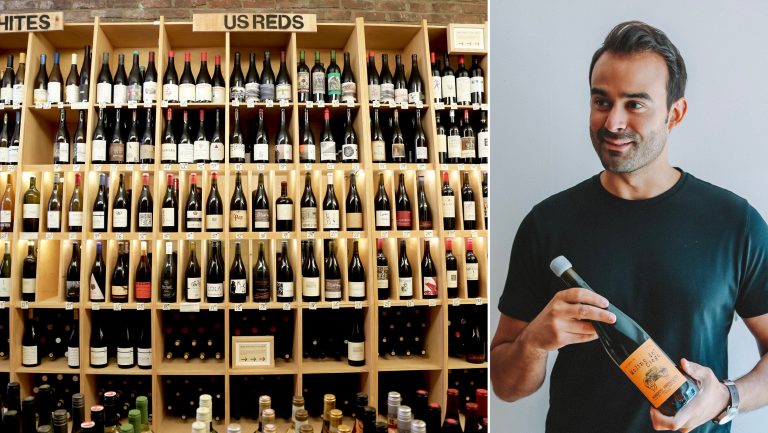
3. Profit from Monthly Wine Clubs or Parties
Chris Leon, the owner of Leon & Son in Brooklyn, New York, launched the store’s monthly wine club, Leon Circle, in June 2018. Not only has the club allowed Leon & Son to reach customers beyond the shop’s four walls but it has brought new selections to walk-in guests, as any leftover wine from the club is put on the retail shelves. “The club allows us to bring in some really special wines at the right price,” he says, “with a guaranteed customer base and minimal need for shelf space.”
Moore boosts sales even further by hosting a release party for the shop’s multiple wine clubs on the second Sunday of each month. “I tend to get a good deal of non-club-member traffic and a big boost in sales,” he notes, adding that many nonmembers attend as guests of members, leading to future sign-ups. Verve Wine also hosts monthly wine club parties, giving both members and nonmembers the chance to taste the wines featured in each month’s edition of its wine club The Grand Tour, which launched in April 2017. The tastings are usually free, but they provide an opportunity to sign up new members.
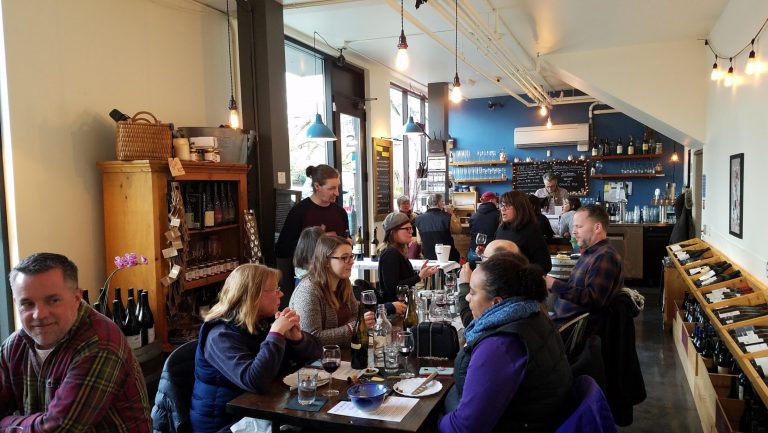
4. Sell Wine-Adjacent Products
While nonwine items typically make up a small portion of revenue, according to Wilson, offering wine-adjacent products—when a state’s beverage laws allow—is important for branding purposes. “It’s less about the sale,” Wilson says, “and more about what carrying those additional products says about us and what we care about.” Verve Wine sells Zalto wineglasses—“because they are the best glass on the market,” Wilson says—as well as wine books and magazines from people and publications the shop supports. Lou Amdur, the owner of Lou Wine Shop in Los Angeles, has added cheese, crackers, condiments, salumi, and tinned anchovies and sardines to his offerings, as California beverage law allows foods to be sold at a wine shop.
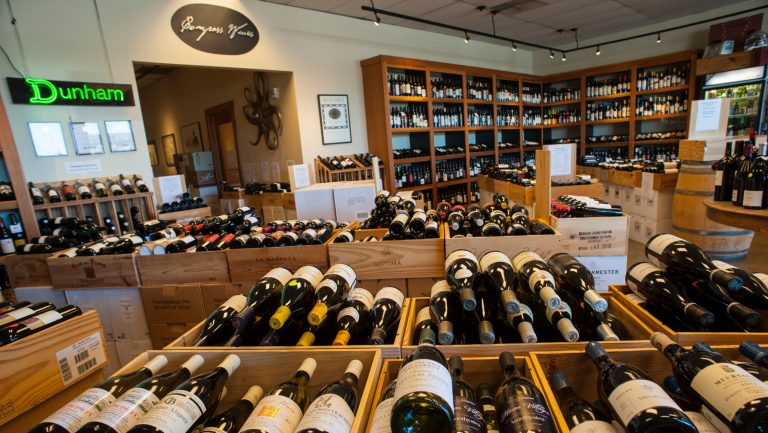
5. Maximize Shop Layout
Particularly when a retail shop is tight on space, creative layouts are key. Leon uses the full height and length of the store for bottle sales, filling dead space with wooden cubbies and shelving. “The trick is to collaborate with a talented designer who can see the potential in your space,” he says. Doug Charles, the co-owner of Compass Wines in Anacortes, Washington, purposely designed the store with a slightly confusing layout, which allows him to interact more with customers. “By not having wall signs, we are not pigeonholed into filling specific slots on the shelf,” he says, “so things are always a bit different every time a customer comes in.”
To maximize both space and sales, Amdur uses a movable merchandiser with items like wine keys and two-liter Erlenmeyer flasks, which he recommends as decanters. “The merchandiser is on wheels,” he says, “and we can move it to one side of the shop to clear a large space for setting up tables [during special dinners].”
6. Create a Convivial Space
Verve Wine employs a large communal table at both its locations. “Giving our guests the opportunity to connect with us and others in the wine community is an important part of what we do,” says Wilson, “so even though these areas are not heavily merchandised, they are a very valuable use of our space.” When not hosting events or tastings, Wilson will use the community table to push sale items or promotional wines.
Jill Bernheimer, the owner of Domaine LA in Los Angeles, has a large open space in the center of her store that she calls the living room. Accented with an array of chairs and side tables, it’s primarily used for sitting and chatting or tasting with winemakers or customers. “I don’t create more sales by maximizing SKUs per square foot,” she says. “I suppose I do it by making the space clean, contemporary, and uncluttered—[with] aesthetics [intended] to have an impact on people. That’s what I ultimately think is beneficial for sales.”

Dispatch
Sign up for our award-winning newsletter
Don’t miss the latest drinks industry news and insights—delivered to your inbox every week.
Vicki Denig is a wine, spirits, and travel journalist based between New York and Paris. Her work regularly appears in Decanter, WineSearcher, Food & Wine, and more. She also works as a content creator / social media manager for a list of prestigious clients, including Beaupierre Wine & Spirits, Corkbuzz, Veritas Imports, and Crurated.

